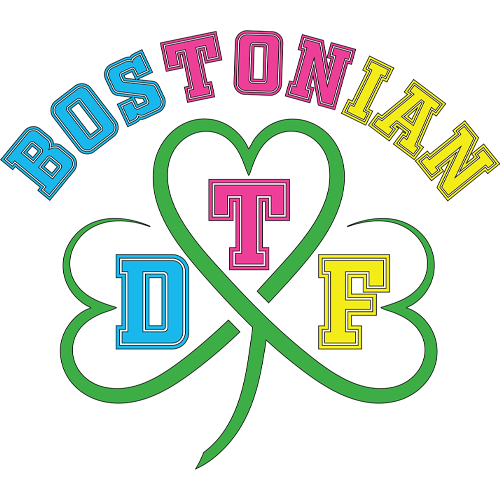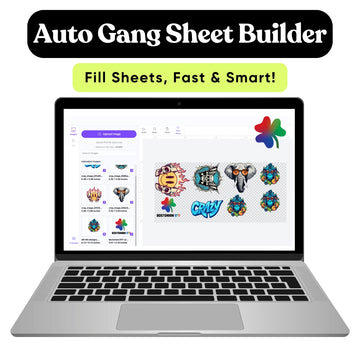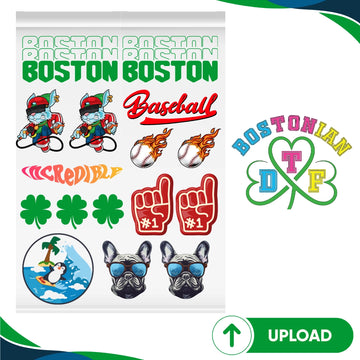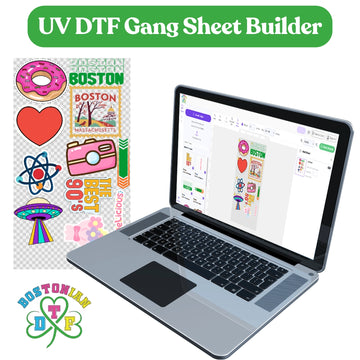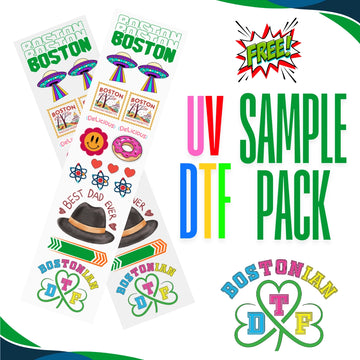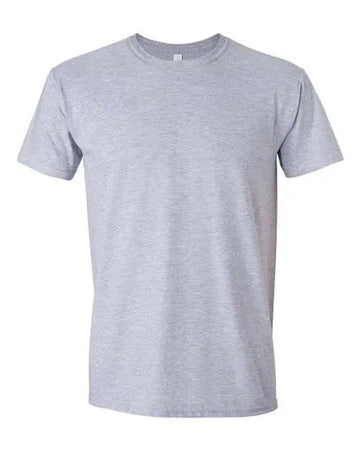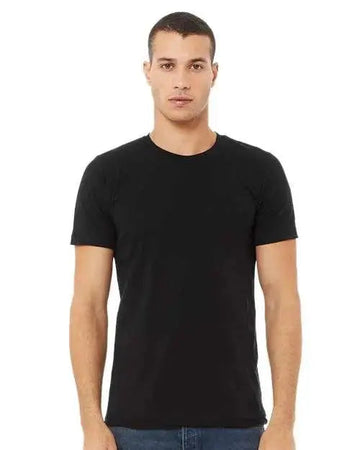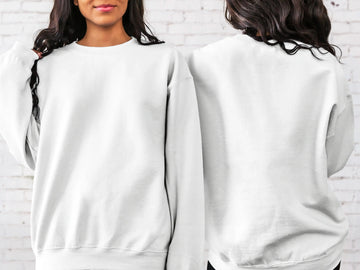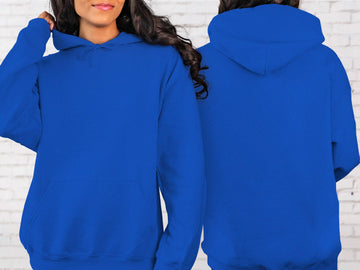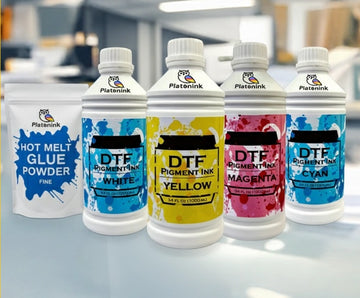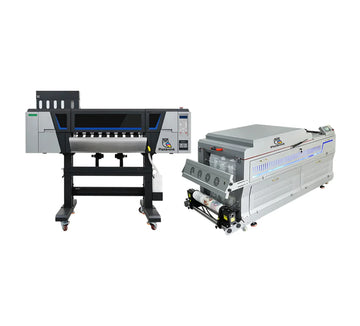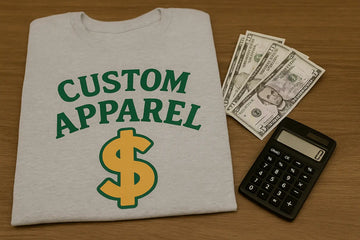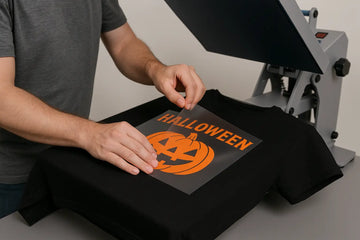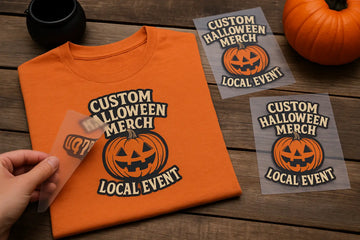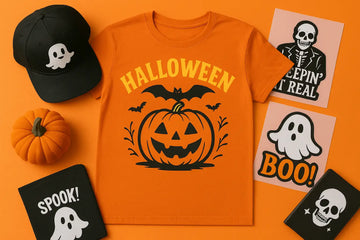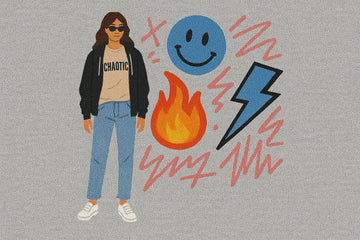Want to start a side hustle that pays? DTF can help you earn extra money every month! However, while entering the custom apparel industry can be thrilling, especially given the strong tools that Direct-to-Film (DTF) printing offers, it is not always a straightforward process. One of the most important aspects of running a profitable clothing brand is custom apparel pricing for profit.
Custom pricing means more than just defraying expenses; it's about maximizing profit without repelling consumers. In this post, we will explore a realistic pricing method and learn how to price DTF shirts for an online store, enabling you to grow your business sustainably.
Custom Apparel Pricing for DTF
Below are some of the tried-and-tested DTF business profit tips that can help you get started with your DTF business without any additional help. Utilize our step-by-step approach to launch quickly and achieve a lucrative start.
1. Understand Your Expenses
Knowing your whole production costs is vital before you decide on prices. Among the most common errors that can erode your profit margin is underestimating your costs.
Direct expenses include:
- Blank items like hoodies, bags, or t-shirts.
- The DTF prints (cost per gang sheet or print).
- Film (if printing in-house), adhesive powder, inks, etc.
- Use of heat press (electricity, wear and tear).
-
Materials for each order's packaging.
Indirect costs include:
- Software for design or subscriptions.
- Maintain and manage websites.
- Costs for advertising and marketing.
- Studio or shop rent, if any.
- Your work and time, even if you are a solo entrepreneur.
Including materials and labor, let's say the direct cost of manufacturing one shirt is $9. Include a share of your indirect costs (e.g., $1 per shirt) and continue. Your overall cost per item is now $10.
2. Create a Profit Margin
Once you have determined your unit cost, you need to learn how to price custom t-shirts to achieve the desired profit per sale or profit margin.
Most companies in the DTF printing business strive for a profit margin between 30% and 60%, depending on their brand placement and target market. Usually, a good starting point is a margin of 50%, which aligns well with typical custom clothing profit margins.
You can use this easy formula to determine your retail price:
Retail pricing = Total Cost divided by (1 minus Desired Profit Margin)
For instance, if your cost is $10 and your desired margin is 50%, your retail price would be:
$10 ÷ (1 - 0.50) = $20
Making a 50% profit on the shirt calls for a $20 sale price.
3. Investigate the Market
Although you have computed your price precisely on paper, the ultimate test is whether your target market is ready to pay it. Market research lets you assess your products' pricing, quality, and demand profile.
Begin by examining your market's competitors, especially those already running a successful DTF shirt printing shop or offering custom DTF transfers. Review comments from customers that highlight what similar DTF apparel is priced at, and how your product compares in terms of design quality, fabric, and customization options.
A greater price is merited if your branding and product quality surpass those of your rivals. However, you may need to adjust accordingly if you're entering a highly competitive, price-sensitive market.
4. Clarify Your Brand Worth
Your pricing should be consistent with how you would want clients to view your company. Pricing is also about the tale your product tells, not only about figures.
For instance, while a $35 t-shirt with creative packaging, a distinctive design, and clear branding can be perceived as premium, a $15 t-shirt might be seen as plain or mass-produced.
Consider what makes your company distinctive:
- Your creative flair?
- Sustainable materials?
- Individualized service?
These elements help determine perceived worth and may support higher pricing, especially if you position your brand above the regular pricing strategy for apparel brands.
5. Employ Tiered Pricing
Offering multiple product levels is a smart strategy to attract a broader customer base and increase your average order value. Tiered pricing allows customers to upgrade while making your basic product appear to be more affordable.
Example:
- One-sided printed basic tee: $20
- Premium tee with double-sided print and specialty ink: $30
- Limited edition or personalized artwork tee: $35+
Bundles work well, too. Rather than selling one shirt for $25, provide three for $65. This gives consumers a perceived deal while raising your income per transaction. Including a DTF apparel pricing guide or clear chart also helps customers see the value at each tier.
6. Customize Charging
Providing one-off designs or customizations is a value-added service that should be charged appropriately. Charging for your effort, creativity, and time is a sensible approach and key to any DTF business profit tips strategy.
There are several methods to accomplish this:
- Include a flat-rate customization charge on the order (e.g., $5–$15 depending on complexity)
- For all custom orders, establish a higher base price.
- Require a minimum volume for bulk custom projects.
Consumers know custom products command a higher price, especially if your portfolio highlights your quality and meticulousness.
8. Price Your Goods Including Shipping and Fulfillment
Early accounting of shipping can be an unforeseen drain on profits. Consider packaging supplies, labels, your time, and postage.
Here are a few options for this:
- Include the cost in the product price, and provide free shipping.
- Offer a flat-rate shipping fee.
- Offer free shipping on orders over a certain threshold.
Calculating this aspect as part of your DTF printing cost breakdown helps keep your pricing transparent and sustainable.
9. Keep a Close Eye on Pricing and Modify Often
Market conditions, supplier prices, and consumer demand can all shift. Therefore, regular tracking of your sales and profitability is crucial.
Make wise adjustments based on competitor pricing changes, seasonal trends, and consumer feedback. When your expenses rise or your product quality rises, don't be afraid to raise your prices.
Revisit your pricing approach as your company expands to ensure it aligns with your evolving brand and market position.
10. Test and Adapt
At last, launch rather than waiting for perfection. Check your pricing under actual market conditions and adjust as needed. Try a variety of product combinations, bundles, and audience response experiments to optimize your results.
Gather information, examine sales patterns, and then adjust your approach accordingly. As you become more confident in pricing your personalized DTF clothing to maximize profit, you will eventually gain valuable insights from the data.
Using tools and guides to price your custom DTF transfers correctly will help you learn what your audience values most.
Final Thoughts
There’s no magic “plug and play” price tag for custom apparel pricing. You need to adjust your actual costs, determine what your customers are willing to pay, and build a brand that balances pricing and costs. You have to crunch your numbers, keep an eye on what’s trending in the market, and try different options and price points until you find the right balance.
Don’t sell yourself short, either, because your time matters, and you deserve to get paid. Figure out a flexible pricing strategy, and you’re halfway to surviving (and maybe even thriving) in the DTF printing business.
Want to increase your profits and get the most out of each print run? Use our Gang Sheet Builder to merge designs easily, save on printing, and maintain competitive custom apparel prices.
